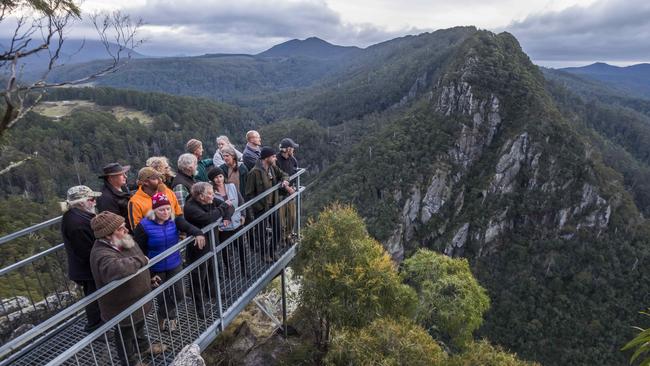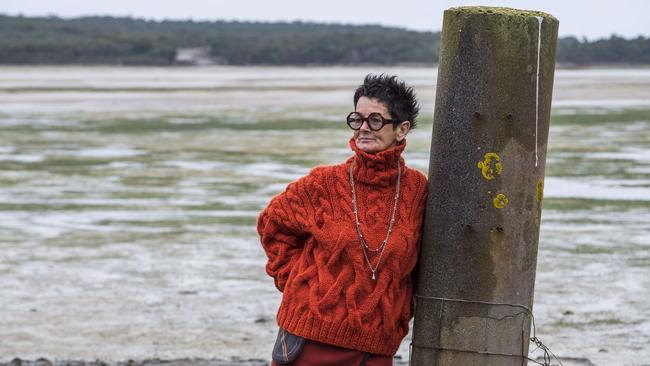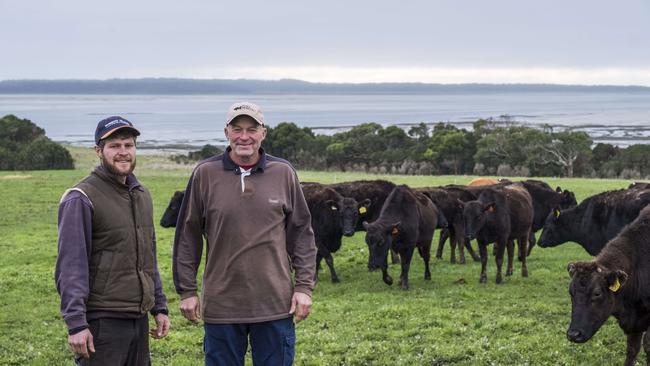Local ill winds threaten $1.6bn renewables project
Bid to build the southern hemisphere’s biggest wind farm has enraged even “clean, green” locals.

Proponents of the southern hemisphere’s largest wind farm say it is a “game changer” for energy security and prices, but are facing community headwinds as fierce as the Roaring Forties it seeks to harness.
The $1.6 billion project is proposed by Hong Kong-based UPC Renewables for two sites in Tasmania’s northwest, Robbins Island and Jim’s Plain, with a 170km transmission line to connect it to the grid.
Chief executive Anton Rohner said if the company’s vision was fully realised, it would combine with Tasmania’s hydro storages and proposed new Marinus interconnector under Bass Strait to substantially address Australia’s energy woes.
“It is an absolute game changer for not just Tasmania, but for Victoria, South Australia and NSW,” he said. “It works beautifully with the (state’s) hydro scheme.
“Our power can be used to pump hydro or to effectively hold the (hydro) electricity. Being able to provide a dispatchable renewable energy — 1000MW — through the Marinus link to the mainland is worth everything … More supply leads to cheaper energy for everyone.”
However, the project faces local and federal regulatory hurdles and unrest about the citing of both the Robbins Island wind farms and the transmission line.

Some living near the 9900ha Robbins Island are concerned about the noise and aesthetics of up to 200 wind turbines, and their impact on thousands of resident and migratory shorebirds, some critically endangered.
Mr Rohner said expert studies using tracking devices showed the birds generally flew around the periphery of the island, not over it, but this was contested by some locals and BirdLife Tasmania.
“The area around the island at low tide is around 100 sq km of exposed mudflat and wetland and it supports more migratory shorebirds than the rest of Tasmania combined,” said Eric Woehler, the BirdLife convener. “We know from work that has been done … that some of the migratory shore birds fly across the island.
“Those radio tracking studies have only been done for one species. We have no information about the extent or frequency of flights across the island for the 20 or so (other) species. Birds that are already critically endangered run the real risk of flying into some of these turbines.”
The rare orange-bellied parrot has been spotted on the island in the past, while Mr Rohner confirmed there were about eight wedge-tailed eagle nests. Only one was active but all would be protected by a 1km radius buffer. He said all potential impacts and proposed mitigations would be tested in the approvals processes, which would include federal environmental assessment.

Dr Woehler and some locals fear a walled causeway to the island, as part of the project, would interrupt tidal flows, damaging the vital sandflat ecosystems.
“What they are proposing is going to kill this beautiful wetland area that is absolutely amazing,” said resident Colleen Murfitt.
Mr Rohner and the owners of the island, the Hammond Wagyu beef farming family, said expert modelling suggested several bridge sections in the causeway would avoid adverse impacts.
“We are cattle people, we love the environment,” said Alex Hammond. “Part of our brand, which sells our beef around the world, is that we are in the cleanest, greenest area in the world.
“So we certainly don’t want to do anything to impact on that.”
The transmission line that is taking the power to the grid near Sheffield is causing outrage among some farmers, tourism operators and residents who fear a significant scar on the landscape and compulsory acquisition of land.
Beef farmer and vegetable grower Darren Gibson said the 60m-wide corridor appeared set to blight the southern and eastern boundaries of his Nietta farm, ending his plans for a tourism development.
“Having six transmission lines cutting across the beautiful views we have here, of snow-capped mountains, just isn’t going to cut it for high-end tourists — it’s ruined our plans,” he said.
Mr Rohner conceded that the company had mishandled public engagement on the transmission line, which was being revised.
He hoped the new plan would avoid crossing the Leven Canyon tourist attraction, an issue of major concern.
Circular Head Mayor Daryl Quilliam said the “vast majority” of locals were “very excited” about and supportive of the project and the jobs and economic stimulus it would bring.



